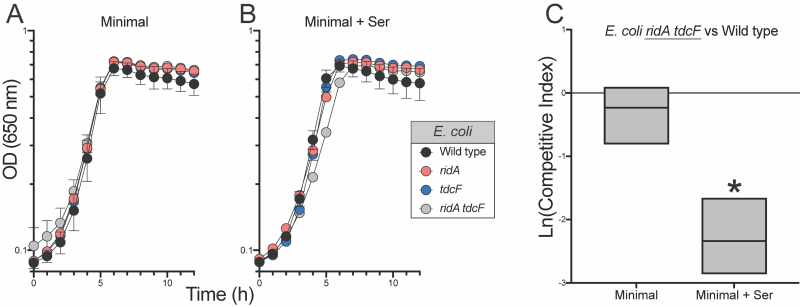Back to article: RidA proteins contribute to fitness of S. enterica and E. coli by reducing 2AA stress and moderating flux to isoleucine biosynthesis
FIGURE 4: RidA proteins are required for full fitness of E. coli. (A and B) Shown are growth profiles of wild type E. coli (black), a ridA mutant (red, ridA790::Km), tdcF mutant (blue, tdcF12::Km) and a ridA tdcF double mutant (grey, ∆ridA890tdcF13::Cm). Strains were grown in (A) minimal glucose (11 mM) medium with no supplementation or (B) supplemented with 5 mM L-serine. (C) Shown is competitive fitness of an E. coli ridA tdcF double mutant (∆ridA890 tdcF13::Cm) grown in coculture with wild type E. coli in minimal glucose (11 mM) medium with or without L-serine (5 mM). Data shown are mean and standard deviation of three independent biological replicates. The underlined genotype indicates the strain for which the CIs are shown in the corresponding graph. An asterisk (*) indicates a significant difference (p ≤ 0.05 as determined by Sidak’s multiple comparisons test) in CI values compared to control experiments in which ∆ridA890 tdcF13::Cm was competed with an different strain lacking ridA and tdcF (∆ridA890 ∆tdcF14 ) in the indicated medium.

